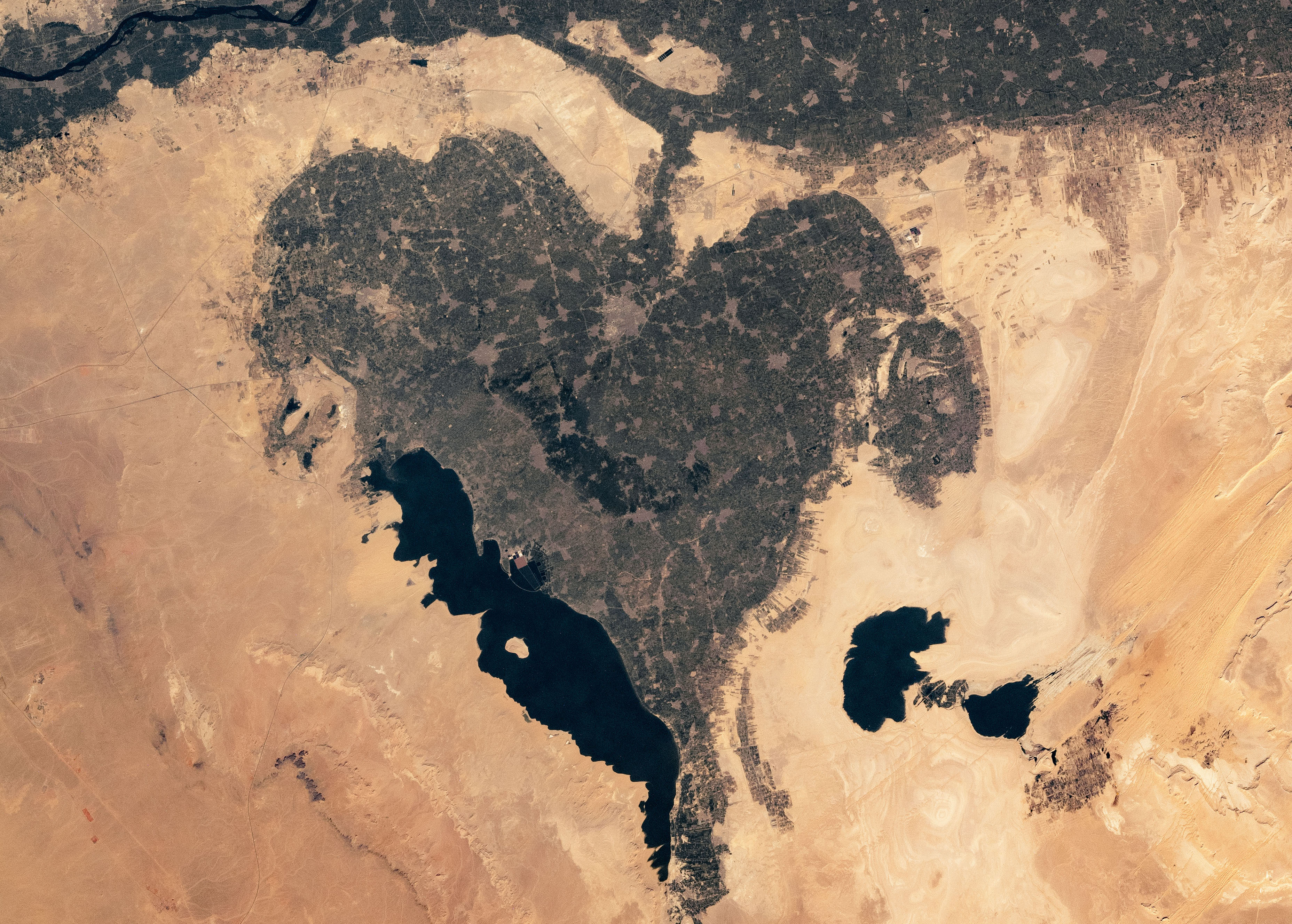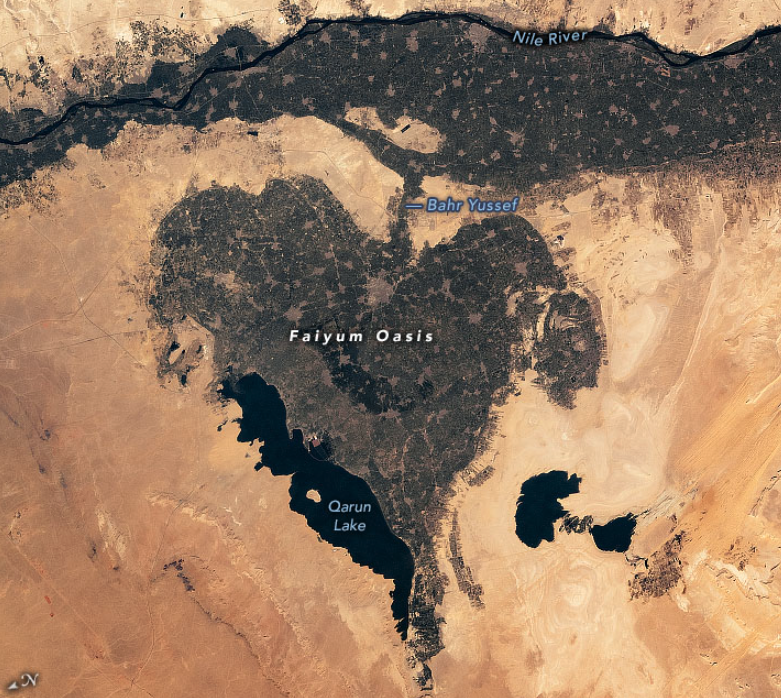Astronauts spot an ancient heart-shaped oasis in Egypt just in time for Valentine's Day
Thank the 'engineering kings' of ancient Egypt for this geographical heartthrob.

Soaring 250 miles (400 kilometers) over Earth, astronauts aboard the International Space Station (ISS) looked down on our planet last May and saw a heart-shaped oasis blooming in the Egyptian desert. Today (Feb. 14), our friends in space are sharing the striking image as a special Valentine for the whole planet, courtesy of NASA's Earth Observatory website.
Known as the Faiyum Oasis, this lush heart in the desert is actually a broad wetland basin that extends over 450 square miles (1,200 square km) – about one and a half times the area of the five boroughs of New York City. While it may be nowhere near as populous as the Big Apple today, the oasis has sustained human life for roughly 8,000 years, according to NASA, and was the staging ground for some of the most ambitious feats of engineering in ancient history.
Fed by a natural channel of the nearby Nile River known as the Bahr Yussef, the oasis was once a shimmering lake called Lake Moeris. The lake's existence depended on seasonal floods from the Nile, according to the University College London (UCL) geography department. When the Nile floodwaters were too low, the rulers of ancient Egypt sometimes took bold measures. There is evidence that a succession of pharaohs living some 4,000 years ago addressed one particularly severe water shortage head-on by enlarging the Bahr Yussef to manually return water to the region.
"This was one of the earliest massive national hydrological projects in the world," according to the UCL website. "The 12th Dynasty kings responsible were Amenemhat I-III and they acquired the title of 'engineering kings'."
Today, the ancient lake lives on as the much smaller Qarun Lake (seen below the heart in NASA's image). Thanks to those engineering works of antiquity, the rest of old Moeris' sprawling lakebed remains a fertile oasis that supports many villages, towns, farms and orchards – which you (and the astronauts) can see in the gray patchy regions that make up the oasis's heart in the image above.
And so, we thank the ancient pharaohs for this geographical valentine. Let's hope their hearts are still where they should be.
Originally published on Live Science.
Get the world’s most fascinating discoveries delivered straight to your inbox.

Brandon is the space / physics editor at Live Science. With more than 20 years of editorial experience, his writing has appeared in The Washington Post, Reader's Digest, CBS.com, the Richard Dawkins Foundation website and other outlets. He holds a bachelor's degree in creative writing from the University of Arizona, with minors in journalism and media arts. His interests include black holes, asteroids and comets, and the search for extraterrestrial life.



